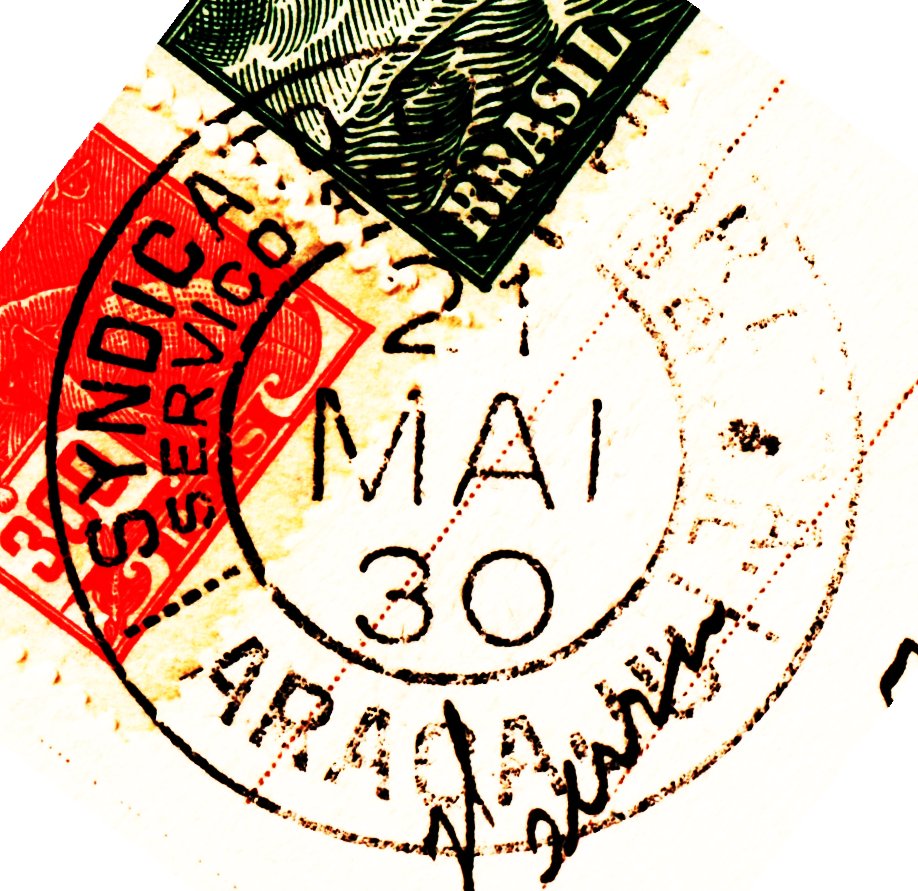 More modern version with all letters of the city named capitalized.
More modern version with all letters of the city named capitalized.|
© Dr. Artur Knoth |
Brazilian Philately: The Pan Am Zeppelin Flight of 1930 |
Brazil
Aracaju:
 More modern version with all letters of the city named capitalized.
More modern version with all letters of the city named capitalized.
Bahia:
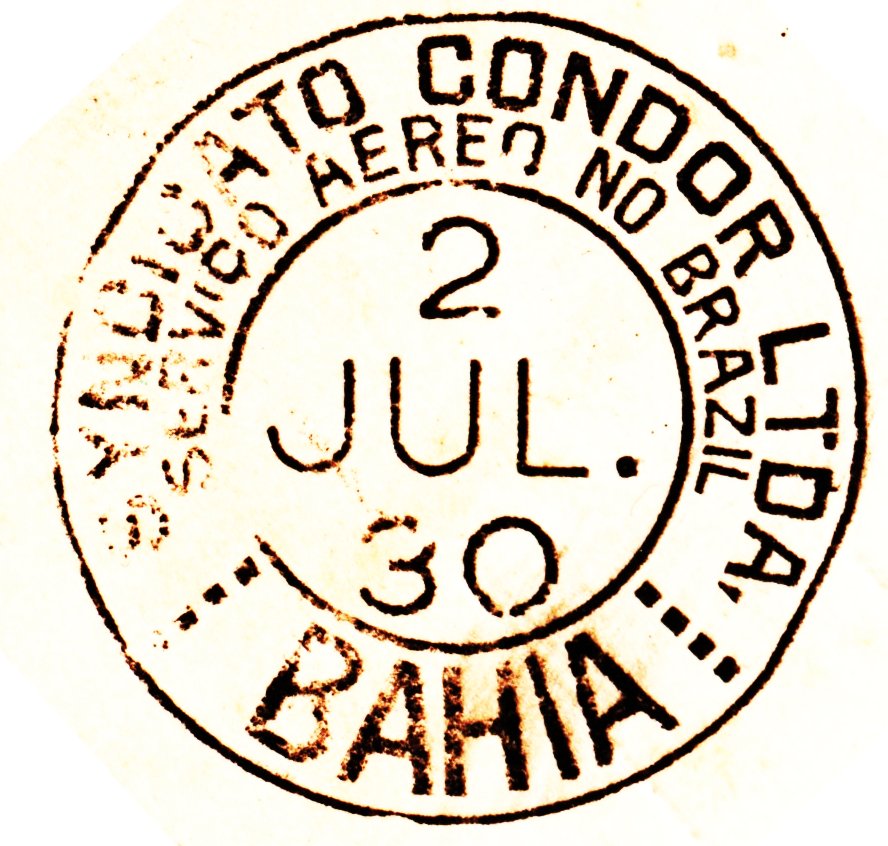 The cancel used on this flight is the one at the left with the LARGE
capital letters, another used a lot later uses smaller letters. I've
only seen one cover for this flight, that used the smaller version as
a canceler and I consider it a fraud. A further Bahia cancel that one
finds on the this flight's mail is the official Brazilian Post Office
version (right).
The cancel used on this flight is the one at the left with the LARGE
capital letters, another used a lot later uses smaller letters. I've
only seen one cover for this flight, that used the smaller version as
a canceler and I consider it a fraud. A further Bahia cancel that one
finds on the this flight's mail is the official Brazilian Post Office
version (right).
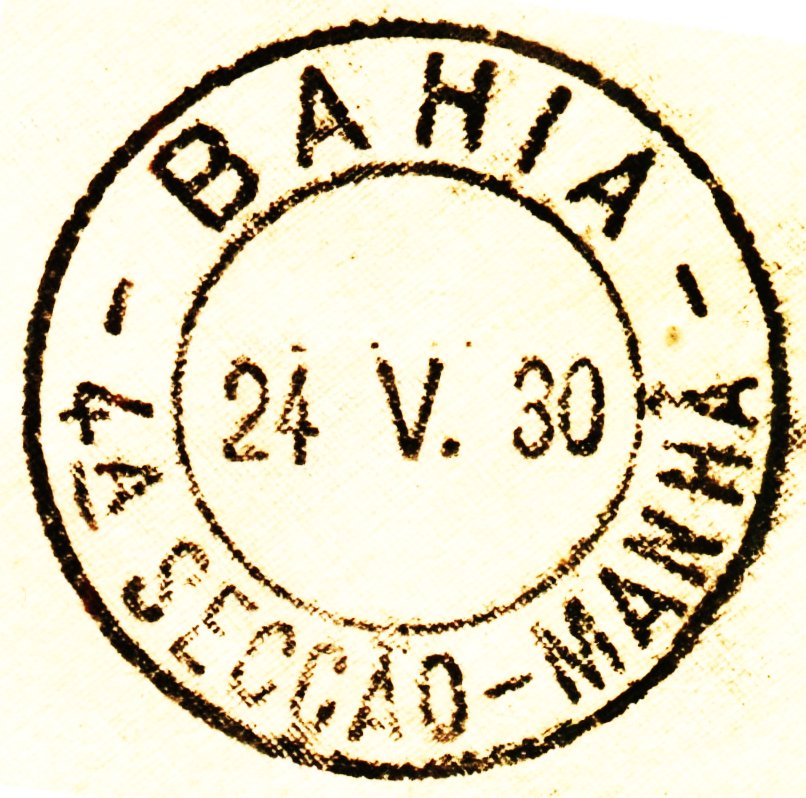
Blumenau:
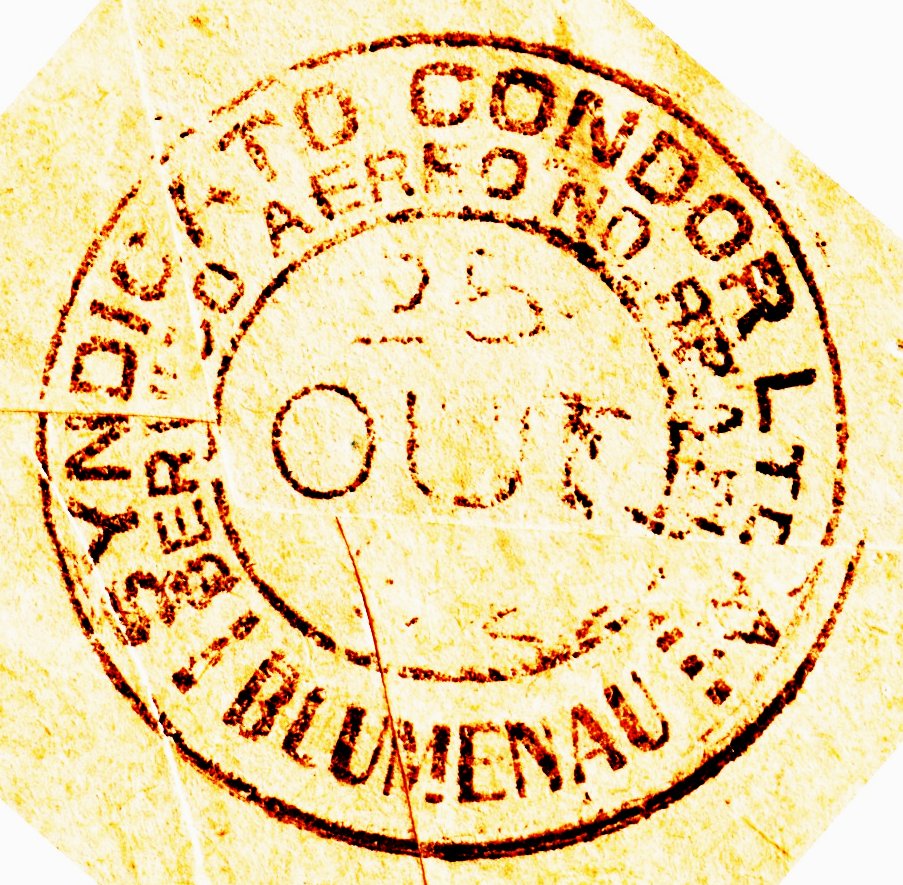 Again all name letters capitalized.
Again all name letters capitalized.
Curityba:
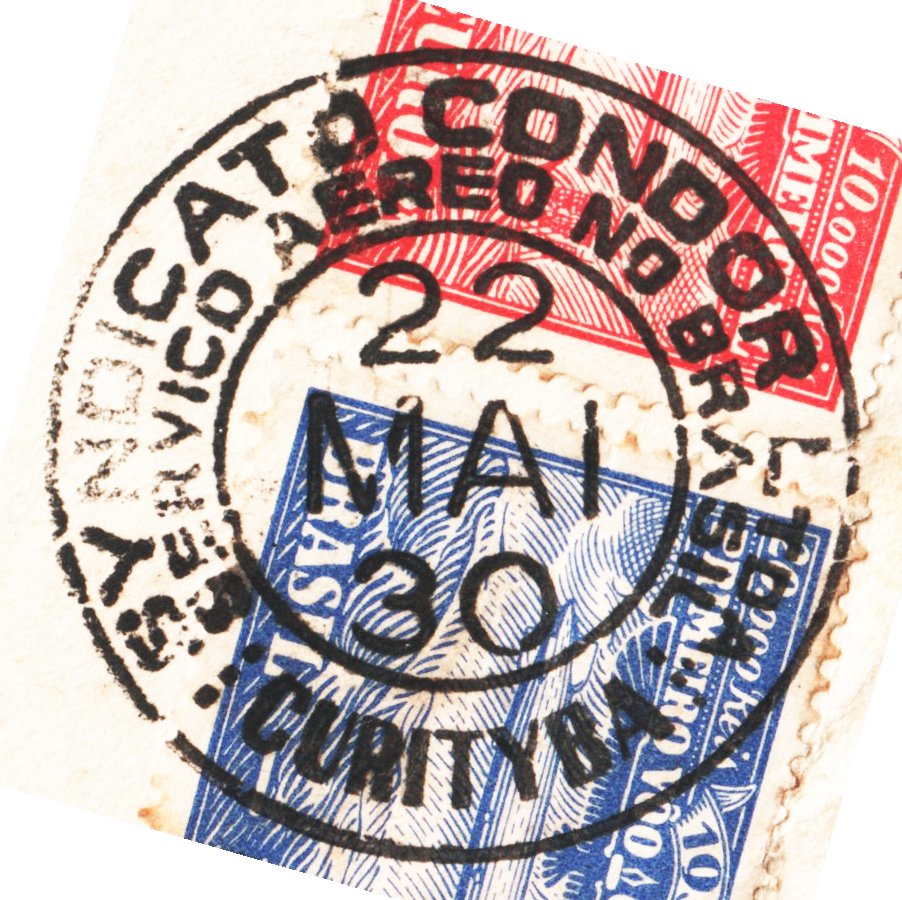 Same as above, but with the name spelled with the archaic “y”.
Same as above, but with the name spelled with the archaic “y”.
Florianopolis:
Itajahy:
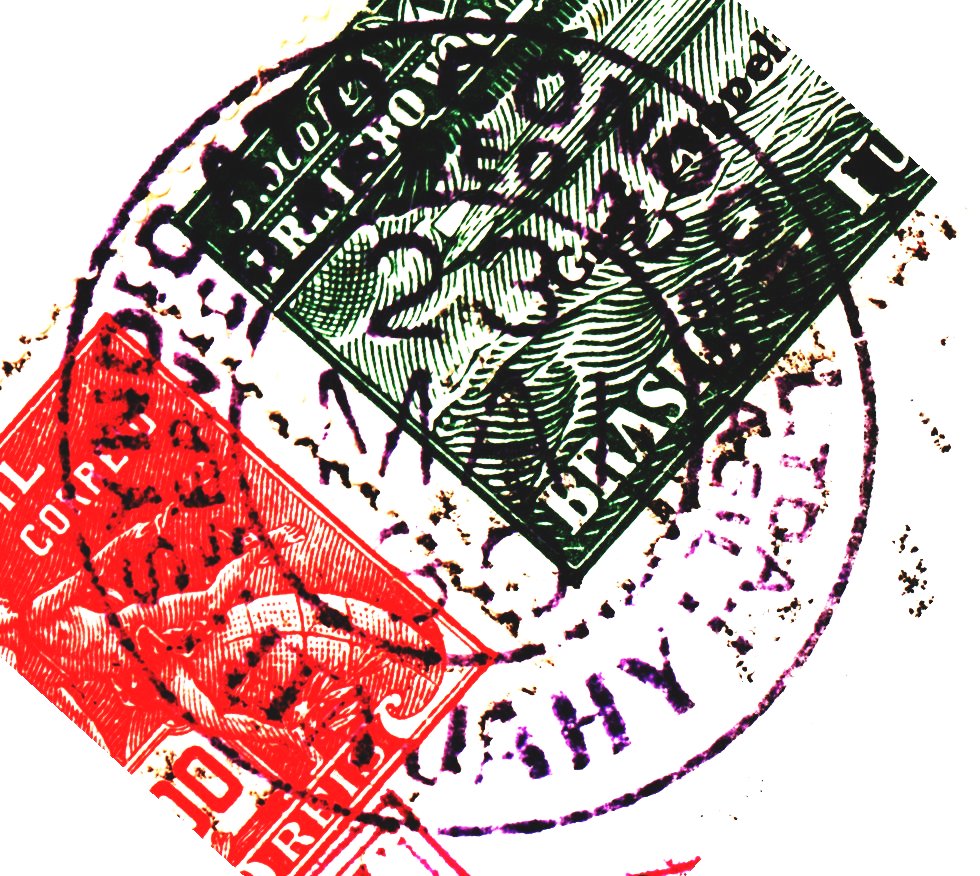 Again standard type, but again the archaic “hy” being replaced by
an “i” in modern times.
Again standard type, but again the archaic “hy” being replaced by
an “i” in modern times.
Joinville:
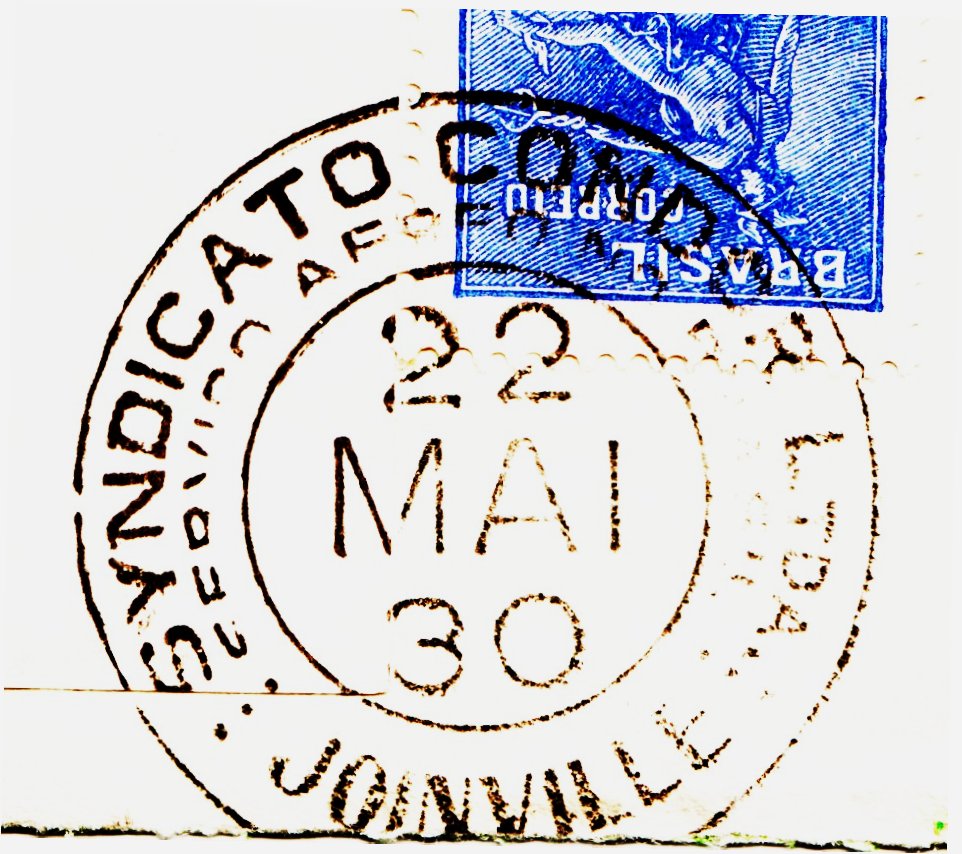 the one used on the flight, but the folks there had a special wrinkle
that can really annoy collectors.
the one used on the flight, but the folks there had a special wrinkle
that can really annoy collectors.
![]()
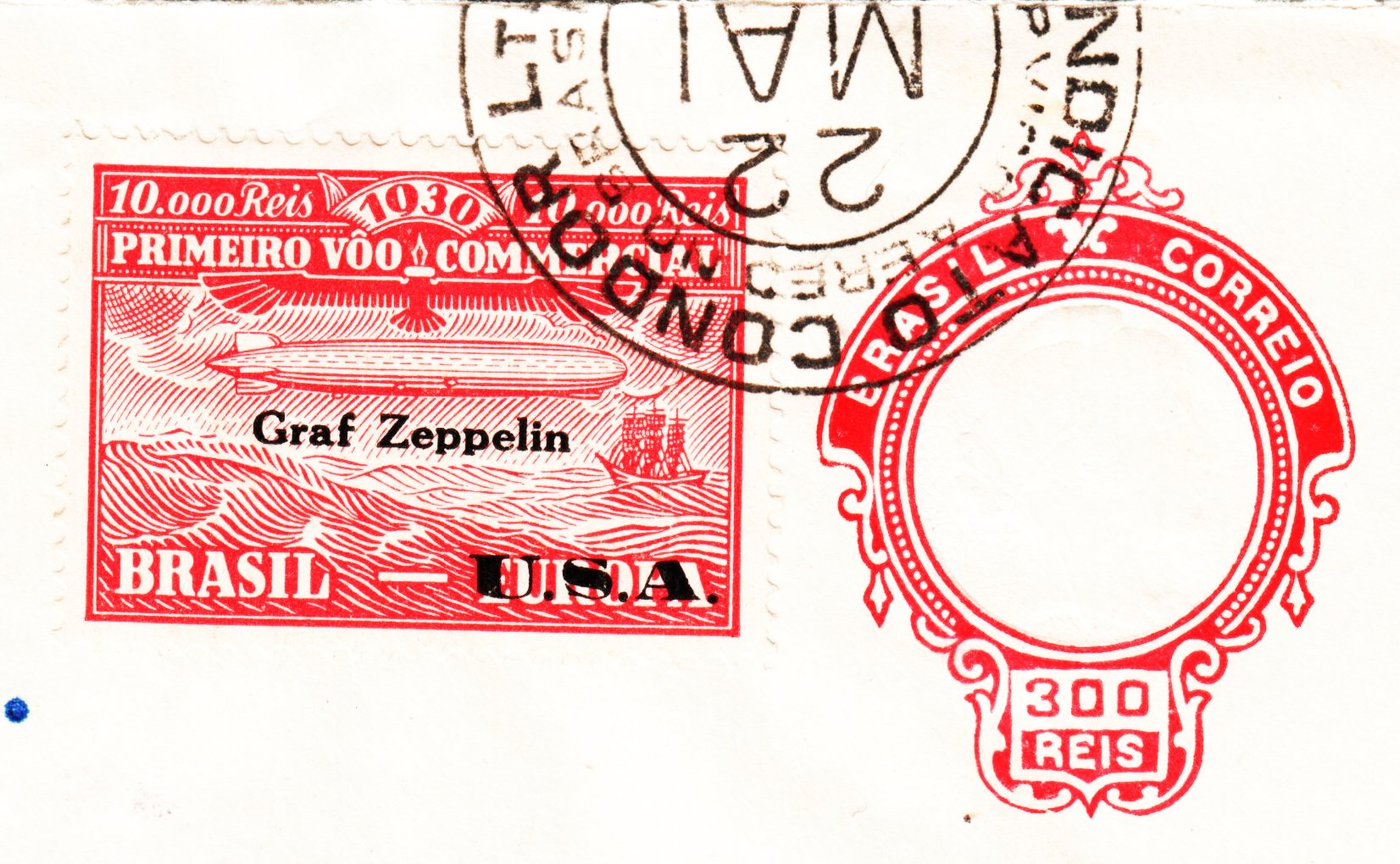
![]() They loved to cancel the cover in such a way that unless there was a
return address or they goofed (so you could actually read the city
name – as in the last cover), you wouldn't be sure where it was
from.
They loved to cancel the cover in such a way that unless there was a
return address or they goofed (so you could actually read the city
name – as in the last cover), you wouldn't be sure where it was
from.
Maceio:
Parahyba:
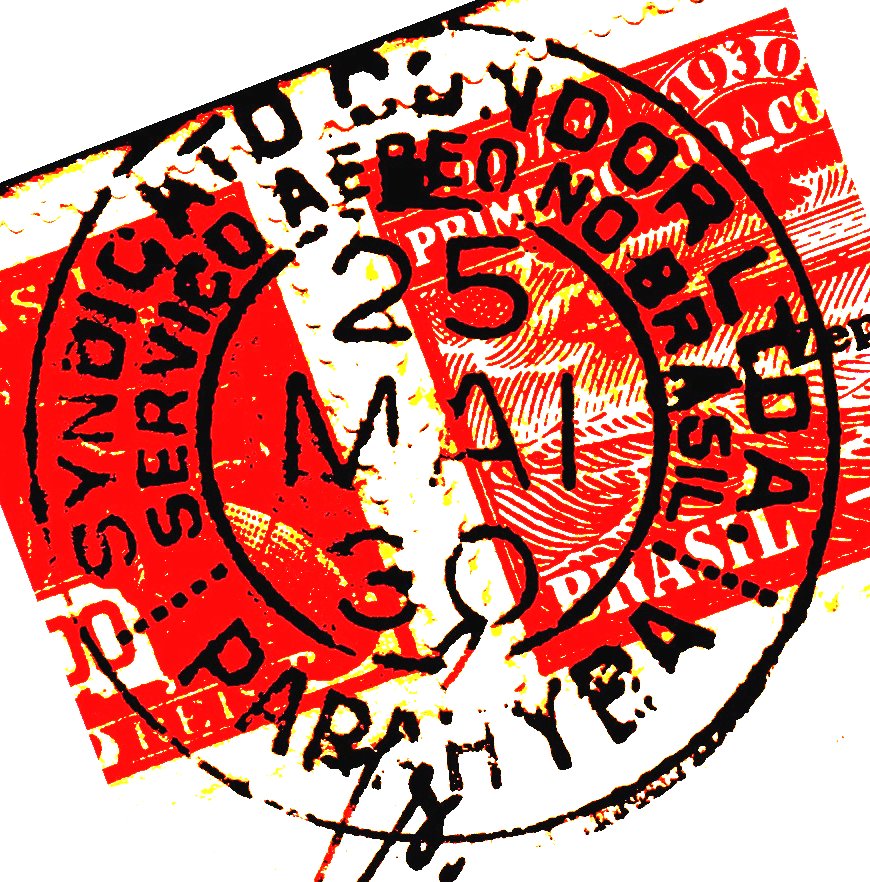 Home of one of the biggest philatelic mistakes, the provisional,
it actually Parahyba do Norte, but soon after was renamed João
Pessoa.
Home of one of the biggest philatelic mistakes, the provisional,
it actually Parahyba do Norte, but soon after was renamed João
Pessoa.
Pelotas:
Porto Alegre:
Recife - General:
The case of this city is a bit more complicated than the others. There's a normal, standard Recife cancel used also for the regular Condor mail, much as the Rio de Janeiro cancellation devices. But additionally, just for this flight, a XXL cancel was produced and used, primarily as a cachet, but that also ended up being deployed as a regular cancellation device.
Recife N(ormal):
This is the normal everyday cancel that Condor used for the mail.
![]()
Recife XXL:
In the latest Sieger (22nd Edition), on page 102 they describe the large Recife special cancel and that are two basic types. This remark is based on my previous research, but unfortunately mis-represented! But it isn't Sieger's fault really, they received copies of my articles, that had been published in the ArGe Brasilien research reports (F38 in October 1990), from the ArGe but without the authors name. Thus they had no one to contact about the details. There are actually four types and a fifth if you consider that a “hybrid” case exists.
|
But first things first, thanks to my research of the O Globo archives, I found an ad by the Casa Mattiy, located in the downtown business district on the Rua Quitanda 97. In the ad, the Recife xxl is displayed as an example of their “Primus” line of devices. Thus we now, for the first time, know who fabricated this device and possibly (my conjecture) all the other Condor cancels. (O Globo page 4 of the 23rd of May 1930 – whole# 1742). |
This “cancel” is noteworthy simply, that, in fact, its is the cachet for the Brazilian leg of the flight and ended also being used as a normal canceling device. One of the very few if not the only known for Zeppelin flights in general. Considering the amount of mail generated not only in Pernambuco, but that coming from Rio de Janeiro and points South (even Rio de Janeiro had 4 cancelers), one can understand that , first the xxl-version was used as a normal device, and two that even the special xxl canceler was not a single device but that several existed, to be able to manage to handle that much mail in the short available for its processing.
Using the above as a guide, now I can go through the 4 main types:
Although usable statistics about the frequency of the Recife XXL by type is not attainable, since the majority of strikes of these cancels are very light or incomplete, making a determination on many covers of which type was used impossible, some broad conclusions can be drawn. Counting the covers I have (or had once), I can reliably state that are there are 20+, and taking into account the von Meister #s sequences seen, probably in excess of 100 exist. THE difficulty, in terms of auction catalogs, is that the cancel is usually on the reverse. But since a lot of people prepared a lot of covers for this flight, there are some names where the probably that KKK shows up is very high. There seem to be two batches, an early batch (mainly covers with the 5$000 for the Rio to Pernambuco leg) has two addressees prominent: Trown and Toth (Patchogue NY).
The second batch seems to have occurred later and consists of Heck 59G -5$000/20$000- in both handwritten and typed addresses. Another are the cards addressed to the Schoederwerke in Germany, which appear with a 5$000-USA stamp or as a 59G too.
Rio de Janeiro:
The gross of the covers that were sent out of Brazil were canceled here. The fact that the stamps were on sale in Rio at 4 different outlets, could help to explain why 4 different canceling devices were used for the Rio mail. The graphics below demonstrate each of the types along with their characteristic properties that differentiate them from one another.
|
- 7 dots left and right - Thin lined inner circle - o of sindicato above a - ~30% of covers |
- 7dots - Inner circle line thick - o is above e of aereo - also ~30% |
- 4 dots (actually 3+1) - Rio letters larger - o is above ae of aereo - ~25% |
- 3 dots - insanely rotating middle piece. - Rare is almost correct copy. - ~15%, thus not all that uncommon |
Besides the fact that already in an article about the von Meister covers (as dealer), covers are displayed that managed to leave Rio without any cancellation, one observes this happening with other, non-dealer covers (see below) and covers with two different types of Rio cancels mixed, also occur.
![]()
![]()
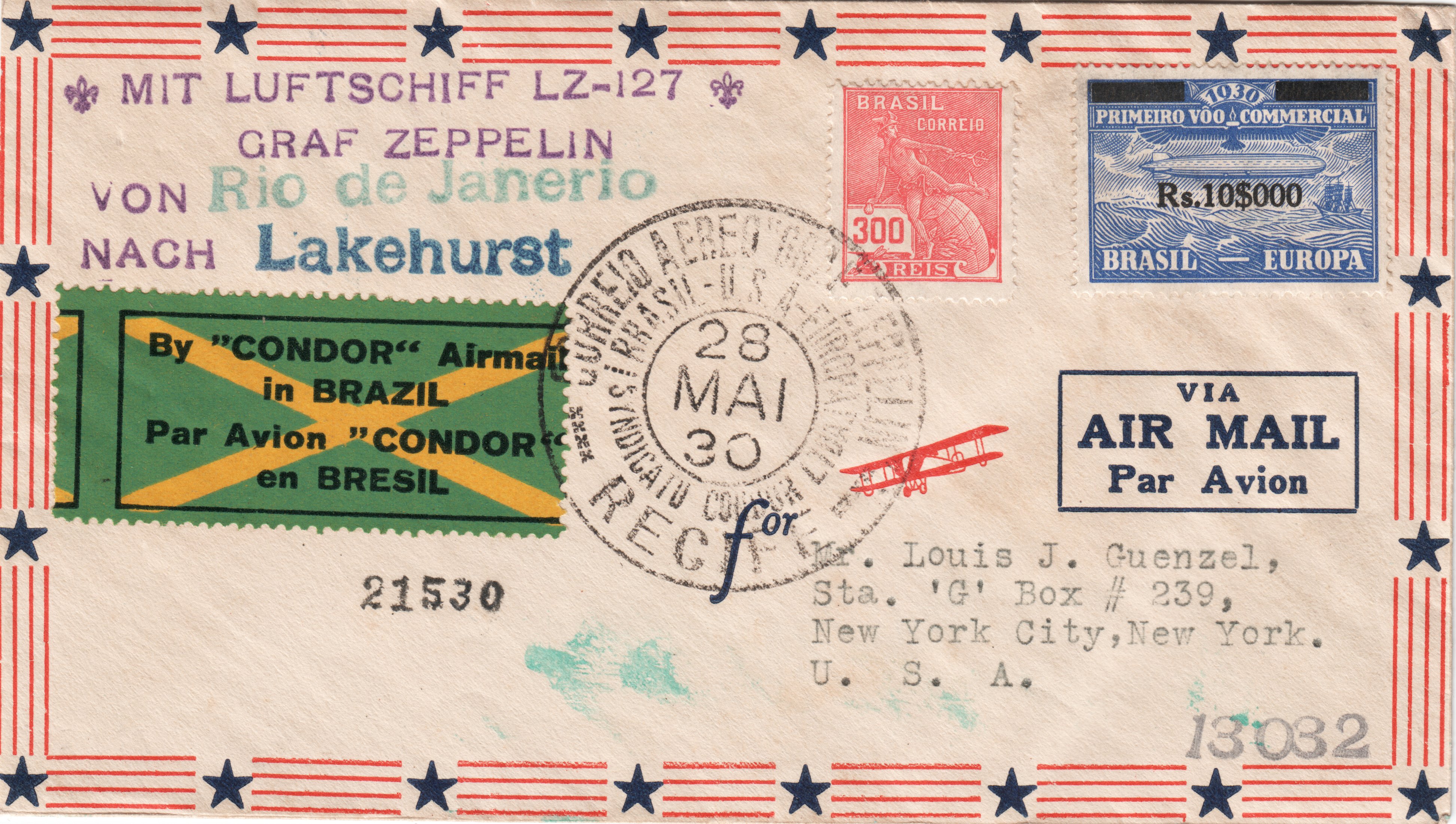
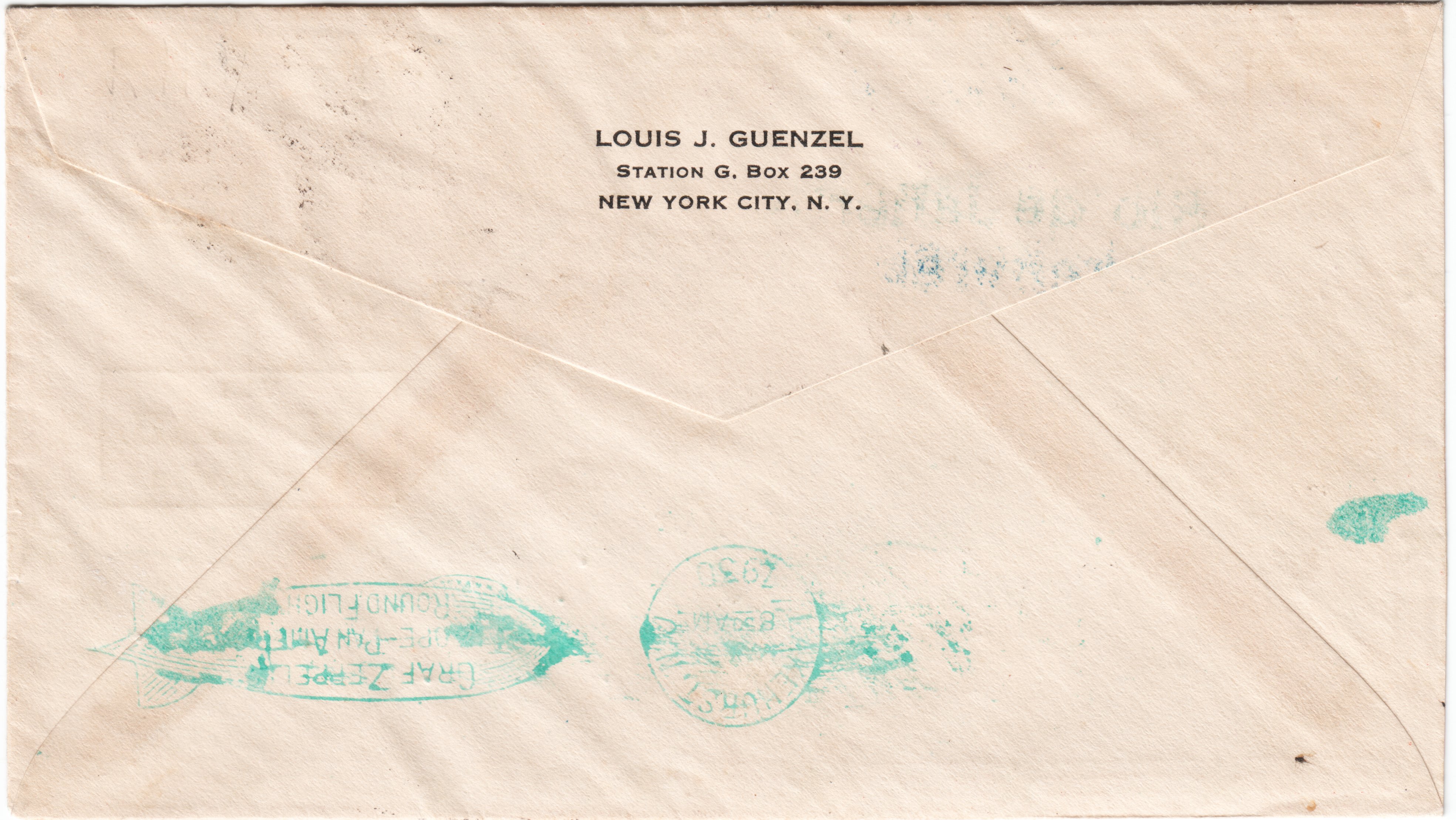 Uncanceled covers from Rio
Uncanceled covers from Rio
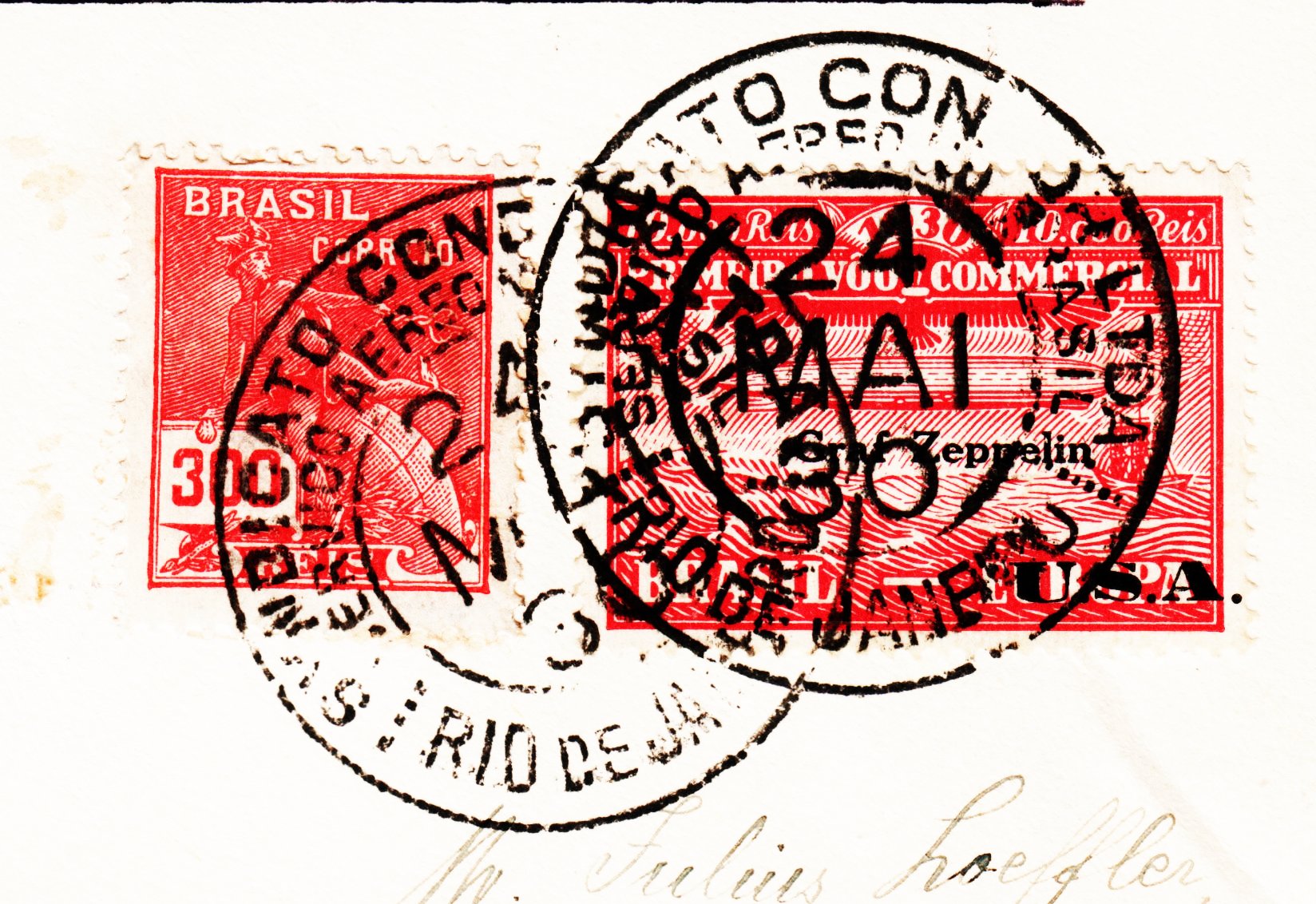 Rio mixed (7ab+4)
Rio mixed (7ab+4)
Later, but not on this flight,
a cancel with propellers instead of dots
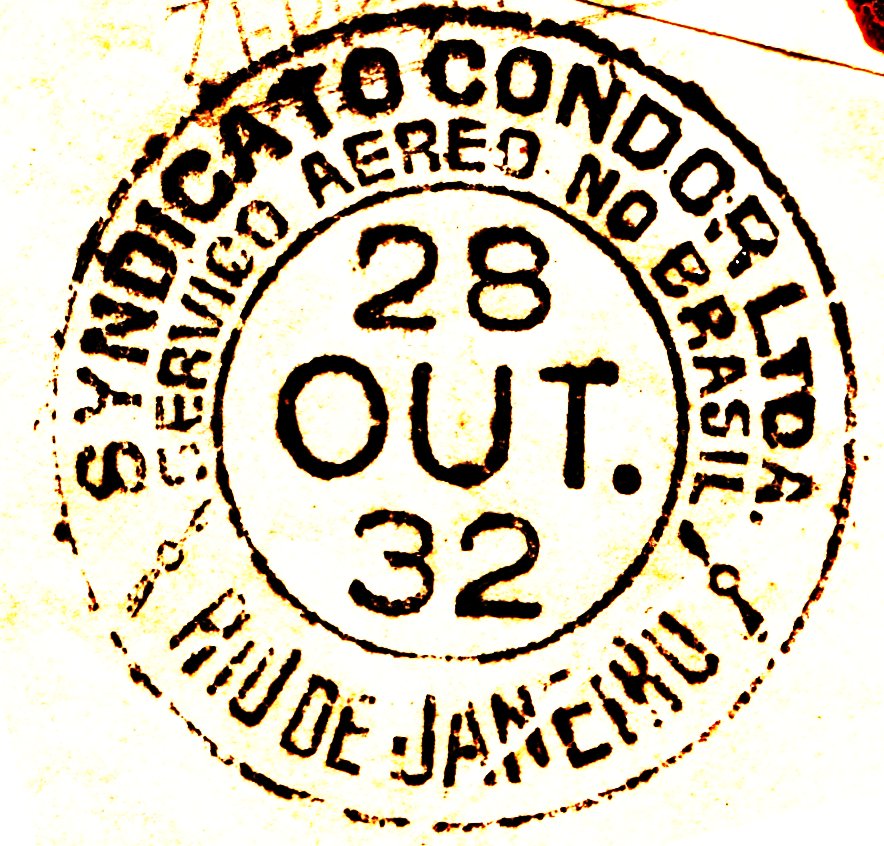
Also, there is an official airmail
cancelor, often found as primary cancelor or as arrival device.
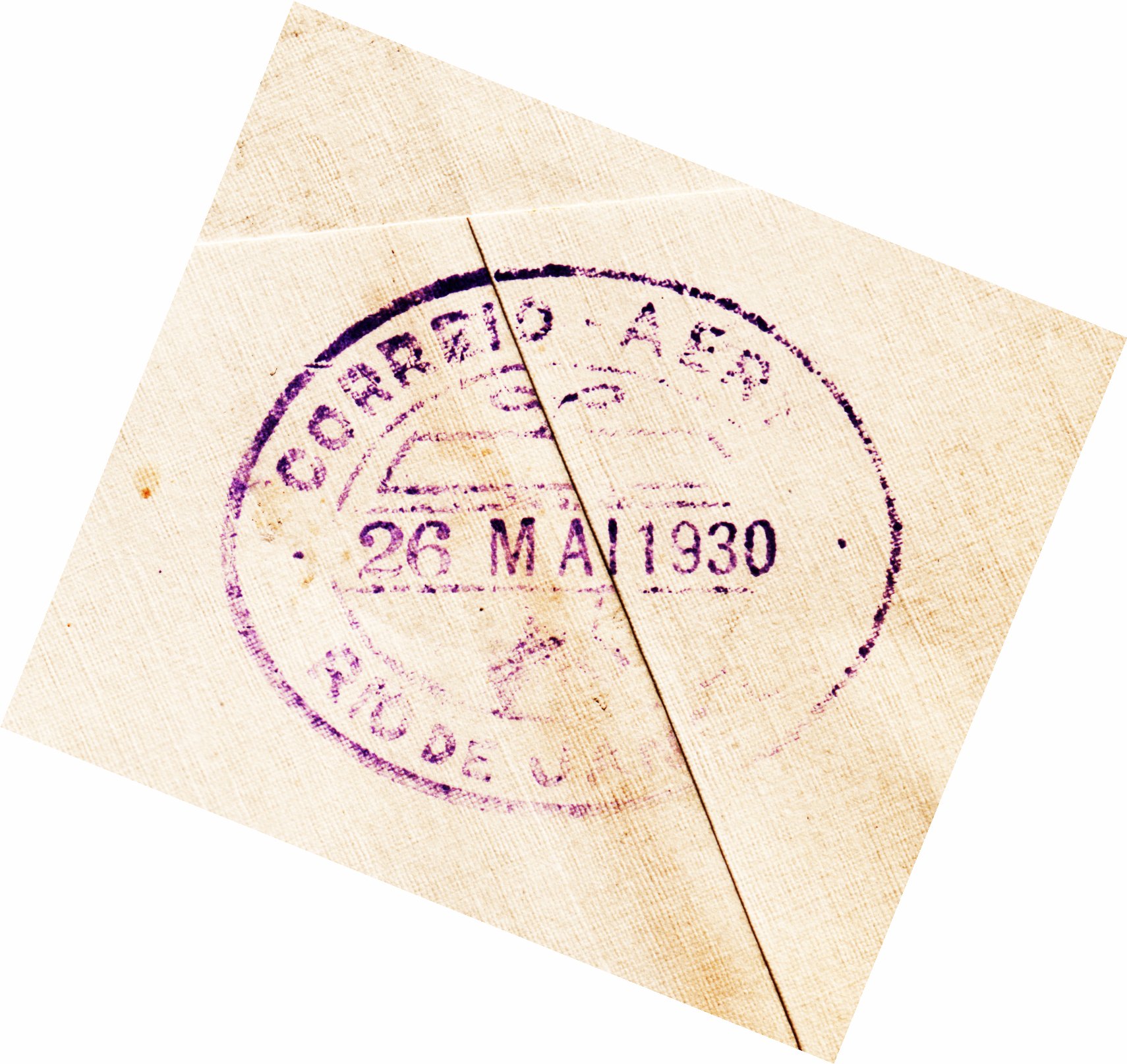
Rio Grande do Sul:
Santos:
São Francisco (do Sul):
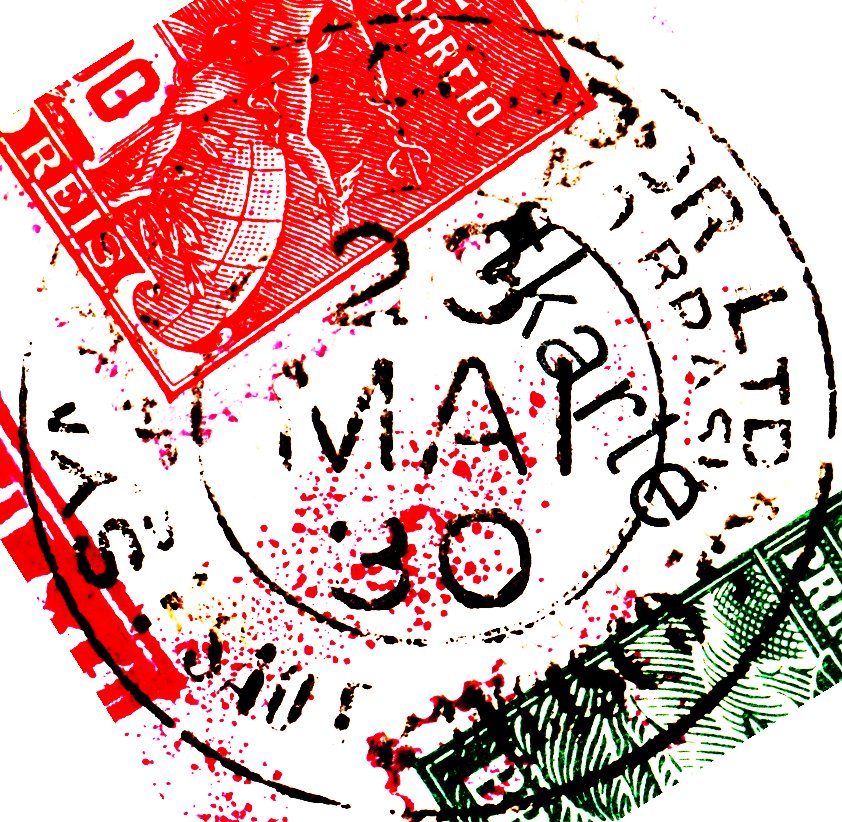 Standard. Many covers in conjunction with an Austrian dealer came
from here.
Standard. Many covers in conjunction with an Austrian dealer came
from here.
São Paulo:
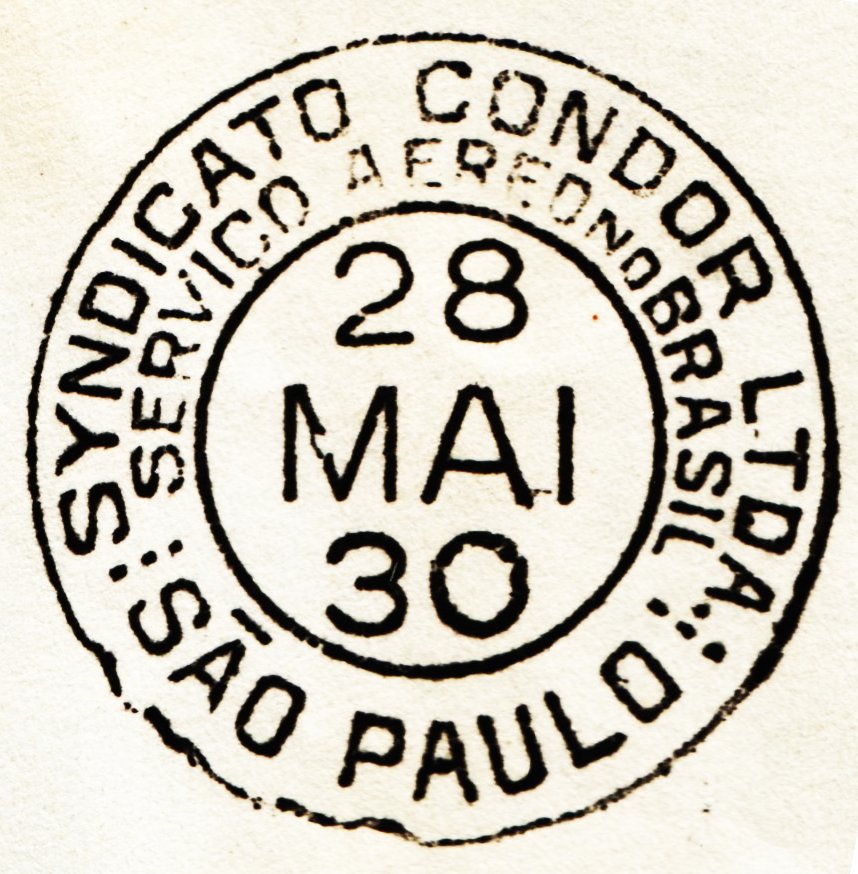 Version used on the flight with the characteristic “wavy outer
frame” at 6 to 8 o'clock. Later,
Version used on the flight with the characteristic “wavy outer
frame” at 6 to 8 o'clock. Later,
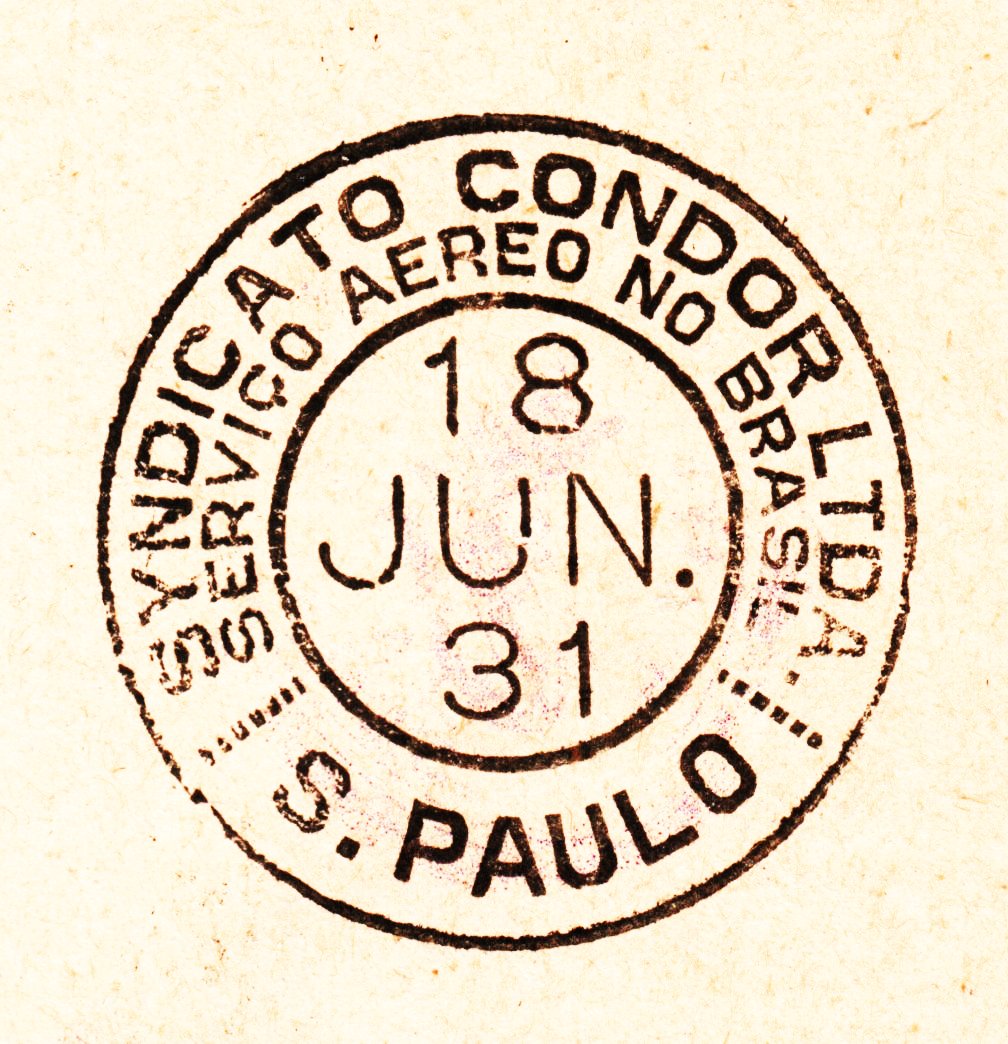 this cancel appeared but not in 1930.
this cancel appeared but not in 1930.